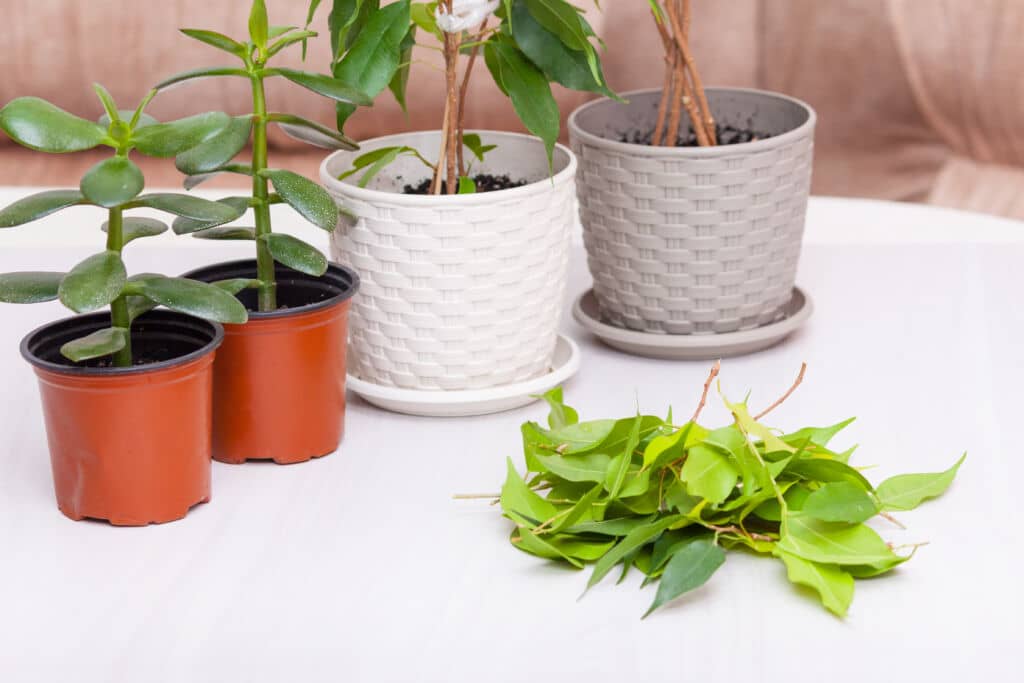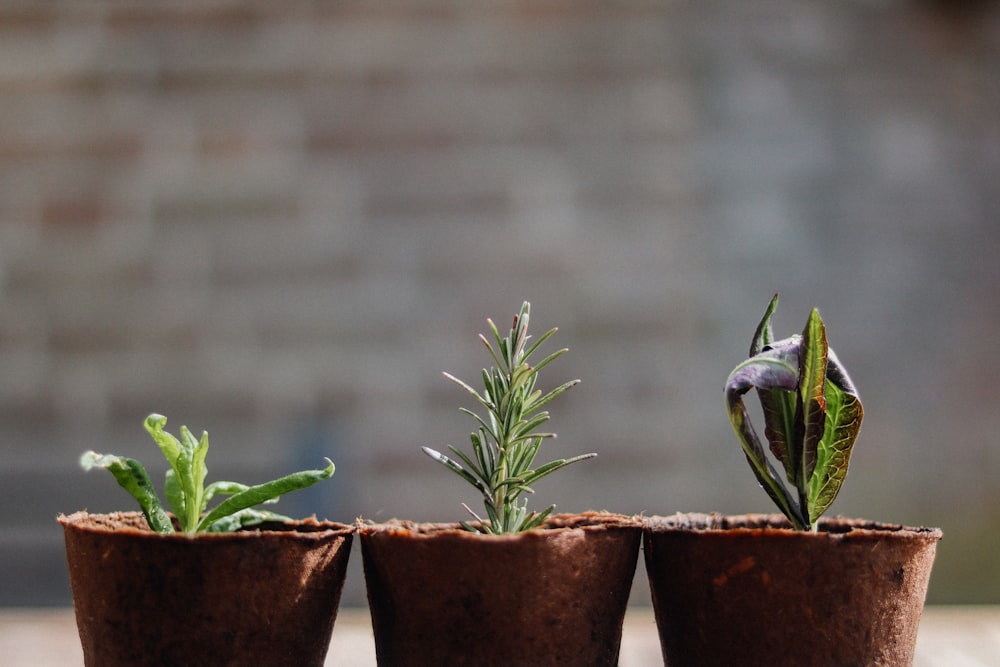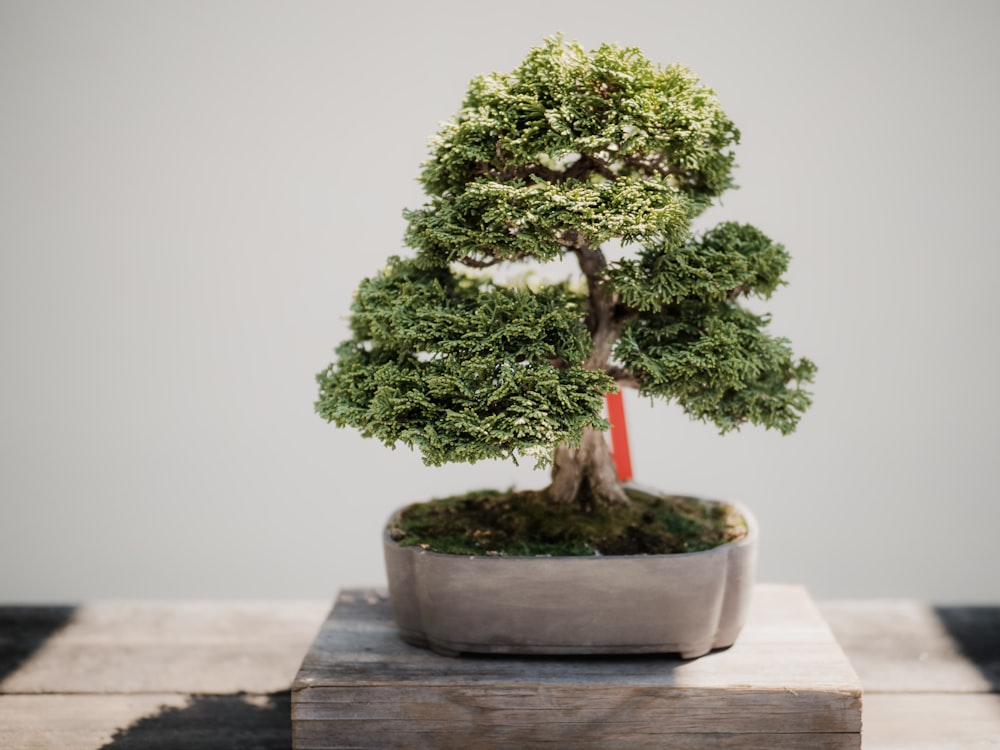HousePlantJoy is supported by our audience. When you purchase through one of our links, we may earn a small affiliate commission. As an Amazon Associate I earn from qualifying purchases. Your cost is not affected.
==================
When you prune a ficus bonsai tree, you try to keep the tree’s shape while also making it look better. Most of a tree’s growth will happen at the top of its stem, which is most open to the sun.
Do you wish to encourage new development closer to the trunk and in other regions of the tree? Then, you must prune these growth zones regularly. Pruning ficus bonsai for beginners is tricky but satisfying.
Pruning Ficus Bonsai for Beginners
Ginseng ficus is the two most common ficus plant species that will evolve into attractive bonsai trees. Also known as Ficus retusa and Ficus Benjamina. On top of that, they were both born in China.
Their small, green shrub leaves and their rapid growth determine their types. Also, shaping these plants’ stems can create many different styles and shapes that look nice. These types of ficus plants can grow quickly, and they can also survive in low light and low humidity. To achieve the most beautiful results from growing a traditional bonsai tree, the tree’s small size must be carefully kept by bonsai trimming.
How Trees Grow?
Trees are born with the ability to grow in a way that helps their crowns, or apexes, grow. Looking at their branches, the main stem of the branch stands out more than the side twigs on the branch. In this natural process, bonsai trees grow taller, so they don’t get too much shade.
Because the tree grows up and out, the inner and lower branches will always wither and die. But, out-of-proportion growth on the tops of the branches is not good for bonsai aesthetics. Knowing how bonsai trees grow, you might be able to figure out how to use pruning bonsai to stop the effects of apical dominance in the forest.
Because most of the tree’s growth happens in its main stems. And knowing that the crown and areas around it must be pruned more carefully than the rest of it.
To make up for this, the tree will have to grow in the middle and lower parts of itself. This will give you more control over how the tree grows and what it looks like.
How Ficus Bonsai Trees Grow?
Bonsai is the art and science of growing small plants in tiny pots. A huge tree is shrunk down to make a small version of itself for an art piece. To maintain the life of a bonsai, it is important to keep it in a shallow pot and to replace its medium often.
In the past, when breeders wanted to make a unique plant, they would usually mix many species from different genera. Now, let me tell you how we can grow ficus bonsai trees as we go on! If you want the most results out of your indoor bonsai maintenance pruning, plant them in the middle of summer.
You’ll get the most mileage out of air-layering in April and May. Planting bonsai ficus seeds is best done in the springtime. By applying this kind of pressure, the branches, roots, or trunks of two ficus bonsai trees can grow together into a single unit.
This technique, which is also called “approach-grafting,” you can use this to make structures that look good. You can join some young plants by tying them to one another and creating a single sturdy trunk.
Tips for Pruning Ficus Bonsai
Many people think ficus bonsai trees are the easiest for beginners. But they can’t survive independently, so you must take care of your tree by following a few basic rules.
Pruning Ficus Bonsai in Winter
Given that the ficus bonsai trees create new growth that is robust but much during the spring season. You must do any bonsai tree pruning that needs to be finished during the year’s colder months. Ficus bonsai trees need to have their branches trimmed during the year’s cooler months.
In other words, winter is the best time to prune ficus ginseng bonsai. With the start of spring comes the growth of new plants that are healthy and plentiful.
Plan Before Pruning Ficus Bonsai
It is an art form to do ficus bonsai tree pruning. It lets you shape the tree the way you want it to look by letting you use your unique ideas and sense of beauty. Before cutting off branches and shaping a ficus bonsai tree, think about how you want it to look when you’re done.
So, this will help you get the most out of your efforts. Because of this, you won’t have to worry about making mistakes in the future. You can reach this goal by focusing on your ficus bonsai tree for a few days and letting your thoughts wander while you do so.
Even if you don’t have a detailed plan for the ficus bonsai tree pruning session, a general idea of what you want to do is enough. Still, knowing where the cuts should be on the branches ahead of time would be very helpful.
Finally, you should explore the idea of branching out alternately. Eliminate one branch from each of the two generated exactly opposite each other to do this.
Bonsai Pruning Tools
Make sure to use clean bonsai pruning tools. Using a non-sterile instrument during the bonsai tree pruning will harm your bonsai. So try sterilizing it to avoid hazardous germs that can harm the tree. Additionally, it is dangerous to use dull cutters. Thus, acquiring a quality bonsai tool set is essential.
How to Use Bonsai Cut Paste?
Before you put cut paste on a wound on a bonsai, you have to roll it into a ball and spread it out with your fingers. Bonsai paste controls how scar tissue forms and how it looks after a wound has healed.
The areas on the branches that have been clipped will start to ooze, and then they will begin to exude sap. So, the cut paste will help your ficus bonsai tree heal quickly and well, especially when getting rid of large wounds.
Is it Okay to Trim Ficus Bonsai After Pruning?
No. But if you want to make a bonsai from a ficus tree, you should prune the stems and branches instead of the leaves. But when trimming bonsai trees, be careful because the leaves that have been cut are more likely to turn brown and lose their beauty. You should never take off more than three leaves from each shoot during the growing season, especially when dealing with leaf drop.
But this isn’t an absolute rule, but it’s something to think about. If you let some of the shoots on your ficus bonsai, particularly ficus ginseng, keep growing, they can help the plant get taller or fill in spaces that would otherwise make it look bad.
Aerial Roots Bonsai
Ficus Benjamina Weeping figs are a common name for ficus bonsai trees. But there are also a few different reasons for this name. It has a one-of-a-kind root system.
It is usually used to improve the aesthetic value of the bonsai tree masterpiece, including fig trees, that you have created. But, turn the attractiveness of the root system, especially for fig trees, to your benefit. You will need to work hard if you want to achieve gorgeous aerial roots and branches for your fig trees.
Remove New Growth Branches After Pruning Ficus Bonsai
Never get intimidated by the process of cutting branches. But rather assist your ficus bonsai tree in reaching the desired appearance. Bonsai tree pruning is analogous to performing a beauty ritual.
When done, pruning should result in the removal of around one-half of the new growth on the plant. Remember that this is not the appearance your ficus bonsai will have in the end. Thus, it is important to be calm and follow the plan.
Pruning Ficus Bonsai Structurally
The basic form of a ficus bonsai tree is via the traditional procedure of pruning away large branches. So, determining which branches to cut off and which will be kept is challenging.
It is not possible to undo this process. But it will have a lasting impact on the appearance of the tree in the years to come.
When to Prune Ficus Bonsai?
When you want to shape a tree’s growth, the best time to prune a ficus bonsai is usually early spring or, in some cases, later in the fall. But the best times for the tree to bear fruit are right before and after the growing season.
The precise timing varies from one species to the next in each case. In the section about tree species, you can learn more about how your tree grows and looks. For example, a Juniper bonsai and a Ficus bonsai are pruned at different times.
How to Prune?
Ficus Bonsai pruning can be challenging. Ensure your tree is at eye level by putting it on a table. Start with the dead branches and work your way down the tree to get rid of all the dead ones.
After that, take a close look at your tree and cut off any branches that aren’t needed to get the look you want. Heavy branches often leave scars on the tree when cut off. But if you use certain concave cutters, you can noticeably reduce the look of any scarring that may have happened.
But cut paste in most online bonsai shops is used to close major wounds. Using the paste prevents the wounds from becoming infected and hastens the tree’s recovery time after injury.
But once more, making use of the appropriate bonsai tools will prove to be helpful. During pruning, a healthy tree should not mind having up to one-third of its leaves cut off. But this shouldn’t be a big deal.
Some think the same number of roots needs trimming or taking out after the ficus bonsai trees has been trimmed or shaped in a certain way. But almost all maintenance experts agree that you should only do one thing at a time (or even once a year).
Imagine that you prune your tree’s structure in the spring. Wait until next spring, when the tree has fully recovered from structure pruning, to repot or cut the roots, taking care to prevent issues such as root rot.
Conclusion
If you know how trees grow, including the specific requirements for pruning ficus ginseng bonsai trees, it will be easier to figure out how and where to prune a bonsai ficus tree so it looks its best. Pruning ficus ginseng bonsai trees makes them fuller throughout their whole structure. Making it also easier for them to change patterns.
The form of your tree will be determined as a consequence of your actions. However, it is necessary to use a wide variety of pruning and trimming methods.
Making it easier to take care of the different species of bonsai. Cut off the top leaves of this ficus bonsai and watch for suckers to make it appear attractive.
The aesthetic value of a bonsai tree relies on its ability always to have a clean trunk. Bonsai shears made of stainless steel should be used to trim the branches. But for the more many branches, a concave cutter is better instead.
FAQs
When is the best time to prune a Ficus Bonsai?
The ideal time to prune your Ficus Bonsai is during its growing season, typically in spring and summer. This is when the plant can best heal and regrow. Avoid heavy pruning in the winter as the growth slows down.
How do I know which branches to prune on my Ficus Bonsai?
Look for branches that disrupt the tree’s shape or are overcrowded. Prune branches that grow straight up or down, as they don’t follow the natural bonsai aesthetic. Always use sharp, clean tools for a clean cut.
Can pruning my Ficus Bonsai harm it?
If done correctly, pruning benefits the bonsai’s health and appearance. However, over-pruning can stress the plant. Start with light pruning, focusing on maintaining the tree’s shape and balance.
Learn More About Houseplants!
Discover more types of houseplants, their benefits, and how to care for them with us! Join us on Facebook, Instagram, and Twitter for beautiful photos, plant care tips, and a community that celebrates the joy of indoor gardening.
Facebook: https://www.facebook.com/houseplantjoyblog
Instagram: http://instagram.com/houseplantjoy20
Twitter: https://twitter.com/HouseplantJoy
Let’s nurture our green spaces together!













